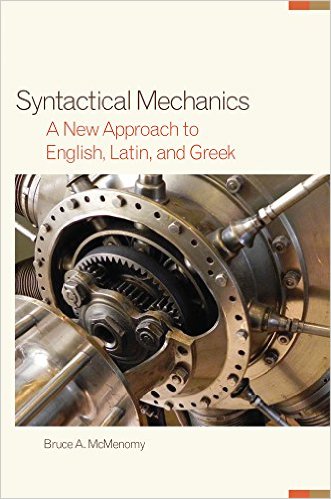Bruce A. McMenomy, "Syntactical Mechanics: A New Approach to English, Latin, and Greek"
English | ISBN: 0806144947 | 2014 | PDF | 226 pages | 3,4 MB
English | ISBN: 0806144947 | 2014 | PDF | 226 pages | 3,4 MB
Syntax, Bruce McMenomy would like the beleaguered student to know, is not a collection of inconsistent and arbitrary rules, but rather an organic expression of meaning that evolved over time. Aimed at intermediate and advanced students of classical languages, this book shows how understanding grammatical concepts as channels for meaning makes learning them that much easier and, in a word, natural.
Syntactical Mechanics systematically defines the basic categories of traditional grammar (parts of speech, subjects and predicates, and types of sentences and subordinate clauses), and then unpacks the most important syntactical structures and markings that shape meaning in a sentence. These grammatical entities evolved, McMenomy asserts, from their common Indo-European ancestors as tools for the expression of meaning, and the continuity of an idea can often be traced through these structures. Accordingly, he examines the elements of English, Latin, and Greek syntax together, exploring how their similarities and differences can disclose something of their underlying rationale.
With abundant examples from English as well as Latin and Greek, McMenomy considers the grammatical cases of the noun, and the tenses, moods, and aspects of a verb. In an engaging and accessible manner, McMenomy helps to rationalize the apparent inconsistencies between Latin and Greek and makes the mastery of Latin and Greek constructions that much more meaningful, reasonable, and likely.



